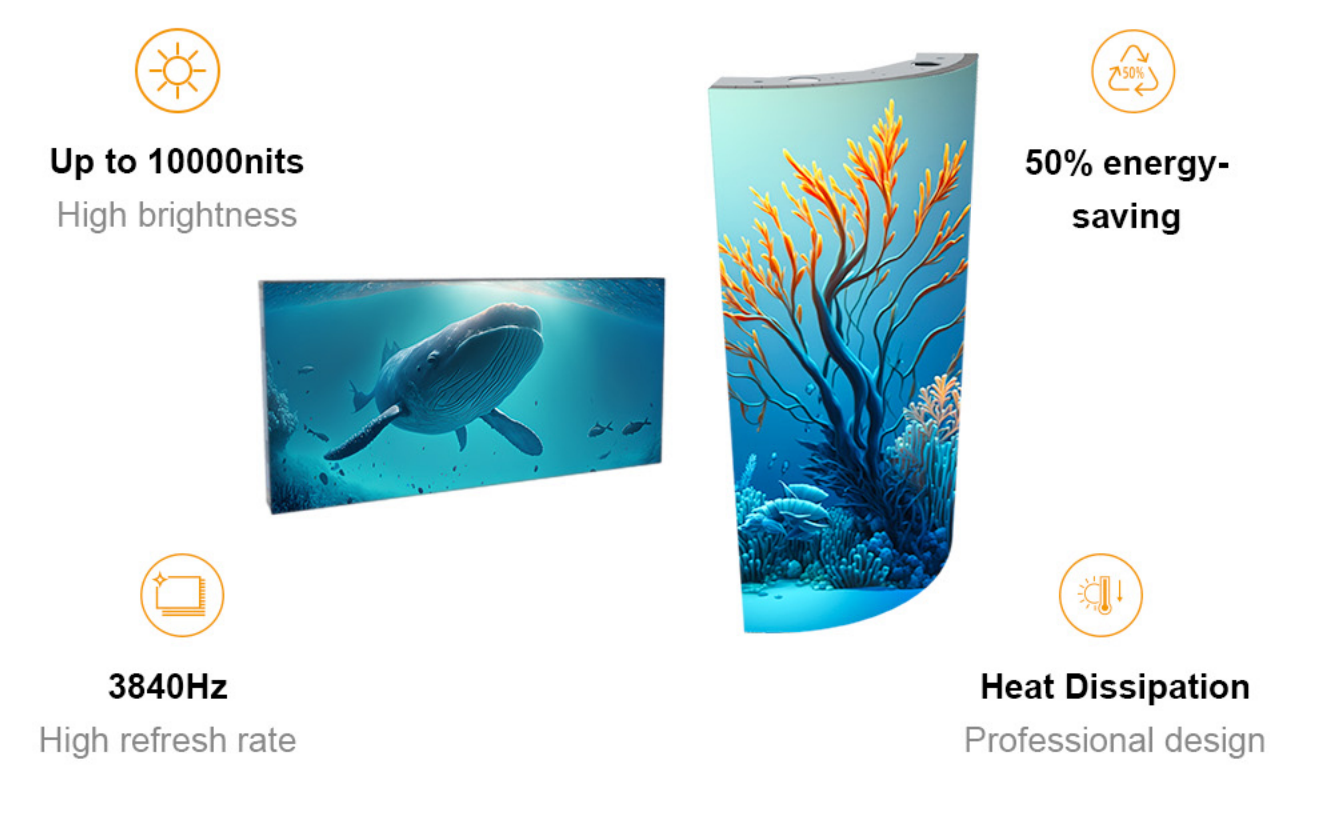The difference between LED backlight display and LCD
 LEDdisplay
LEDdisplay
Hey, hello everyone! As a "veteran" in the LED billboard industry, today I will talk to you about a topic that you may often listen to but may not be fully understood: What is the difference between LED backlit display and LCD (liquid crystal display)? Although their names are a bit similar, they are actually different in their hearts. Once you figure it out, you can only know what you know next time you buy a TV, monitor, or even a large outdoor screen and don’t spend money in vain!
Core difference: The principles of light source and imaging are very different!
To talk about the difference, we have to start from the most core point.
The full name of LCD we usually call is LiquidCrystalDisplay, which is "liquid crystal display". It works like this: It does not shine on its own and needs a backlight to provide light. This backlight is usually a fluorescent lamp (CCFL), or the LED lamp beads that we will talk about later. Light passes through the liquid crystal layer, and the liquid crystal molecules pass through voltage, like small shutters, determining which light energy passes through and which cannot. Finally, these lights pass through color filters to form the various color images we see. Here is a comparison of LCD, LED and OLED displays.
Simply put, an LCD is like a "curtain" that requires the light source behind it to illuminate it, and then the LCD is imaged by controlling the light transmission.
And "LED backlight display" sounds very tall and generous? But please note that it is actually an improved version of LCD! Its core is the LCD panel, but the fluorescent lamp backlight source of traditional LCDs is replaced with LED (light emitting diode) lamp beads. Let you understand how LED light beads work.
Therefore, the LED backlight display is essentially LCD, but the backlight has been upgraded!
Then why use LEDs as backlight? There are mainly the following benefits:
First, thinner and lighter. LED light beads are small in size and can make the screen thinner, just like many ultra-thin TVs nowadays. Secondly, it saves more electricity. LEDs are more energy efficient than fluorescent lamps and are also more power-saving at brightness. Next, the color is better. LED backlighting can achieve a wider color gamut and higher contrast, making the picture more vivid and realistic. In addition, LED lamp beads generally have a longer lifespan than fluorescent lamps and are more environmentally friendly because they do not contain harmful substances such as mercury.
Real LED display: self-luminous, and LCD is "relative" but not "brother"!
When you see this, you may be a little confused: since LED backlight display or LCD, what are the LED billboards and LED large screens we are talking about? How do LED billboards work?
This is the real LED display I want to emphasize!
It is completely different from LCD, it is a self-luminous display technology. Each pixel is an independent LED light bead that can directly emit three primary colors of red, green and blue, and then the image is displayed through a combination of these lights. It does not require an additional backlight, as each lamp bead is the light source itself.
So, you can sort out the relationship:
LCD (liquid crystal display): A backlight is required to display the image.
LED backlight display: It is still LCD, but the backlight source is LED.
LED display: It is completely composed of LED lamp beads, each lamp bead is a completely different display technology. COB LED Display: Explore novel display technology!
Summarize:
Simply put, when you see a "LED TV" or "LED display", 99% of the cases it refers to an LED backlit LCD display. It is based on traditional LCDs and has replaced it with an excellent backlight source to make the picture look better, the machine is more power-saving and thinner. Its main advantage is that compared with traditional LCDs, it has significantly improved thickness, energy consumption, color performance and life. It makes our TVs and monitors thinner, more energy-efficient, and more vivid.
The LED displays we often call, such as large advertising screens on the street and large LED screens in sports venues, are the real LED display technology. Each pixel point is a luminous LED light bead. This technology allows the screen to achieve extremely high brightness and contrast, not affected by ambient light, and the viewing angle is close to 180 degrees, which can be clearly displayed from any direction. Therefore, it is very suitable for use in outdoor or large indoor places, such as various outdoor billboards, stage background screens, sports event scoreboards, and more. Its application scenarios are very different from LCDs because it can adapt to harsh environments and provide more shocking visual effects.
Thank you for watching. I hope we can solve your problems. Sostron is a professional LED display manufacturer. We provide all kinds of displays, display leasing and display solutions around the world. If you want to know: How effective are LED digital billboards? Please click read.
Follow me! Take you to know more about led display knowledge.
Contact us on WhatsApp:https://api.whatsapp.com/send?phone=+8613510652873&text=Hello
Subscribe to my newsletter
Read articles from LEDdisplay directly inside your inbox. Subscribe to the newsletter, and don't miss out.
Written by

LEDdisplay
LEDdisplay
Sostron is a professional LED display manufacturer. We provide all kinds of displays, display leasing and display solutions around the world.